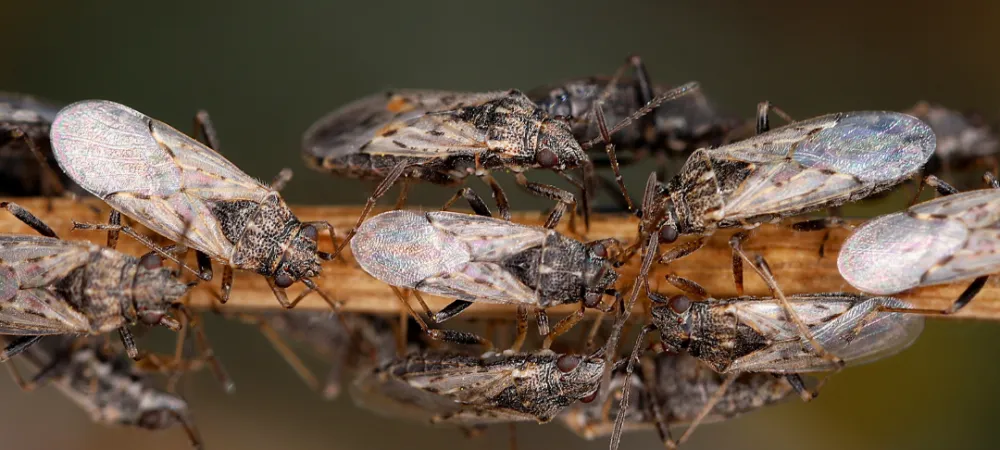Chinch Bugs May Be Damaging Your Florida Lawn

If you're a Florida resident and have noticed brown patches on your lawn, chances are high that there's an infestation of chinch bugs wreaking havoc. These tiny bug pests can cause severe damage to your lawn if they aren't caught early on, making them a frustrating problem for homeowners across the sunny state. With the proper knowledge and techniques, homeowners everywhere can tackle their chinch bug problems! In this blog post, we'll cover everything you need to know about chinch bug infestations in Florida—what they look like and how to both detect and prevent the spread of these pesky intruders.
What are Chinch Bugs?
Chinch bugs are small, black and white insects that feed on the sap of grasses. Chinch bugs suck sap from the stems and leaves of grass plants, which can lead to the grasses wilting, yellowing, and eventual death. They are common in warm climates, especially during dry periods with limited rainfall. During these times, the chinch bug population can multiply and cause damage to lawns.
Where are they Found?
Chinch bugs are attracted to sunny areas where grass grows, such as lawns, pastures, and roadsides. They may also be present in shady areas or under mulch or other organic matter. Due to their small size, chinch bugs can easily spread from one location to another, quickly becoming a nuisance in lawns nationwide.
What Months Are They Active?
Chinch bugs are most active during late spring and early summer warm months when temperatures reach 80°F (27°C). During this time, chinch bugs will feed on grass blades. They can also be seen in early spring or late summer, but not as prominently as during the warmer months.
When temperatures drop, chinch bugs will find a place to hibernate until the following spring. That is why taking preventive measures in the late summer and early fall months is essential, as this can help reduce the chance of an infestation in the following year. By taking these steps, you can help protect your lawn from chinch bugs and keep your grass healthy.
Signs my Lawn has Chinch Bugs
The most common sign of a chinch bug infestation is yellow or brown patches in your grass, which may look like the grass is dying. Additionally, you may notice small white insects crawling on the blades of grass and flying around your lawn. If you spot these bugs, it is vital to take quick action, as they can spread and cause extensive damage to your yard.
Can Grass Recover from Chinch Bugs?
Grass can usually recover from chinch bug infestations if the damage is not too severe. The key to recovering from a chinch bug problem is to get rid of the bugs as quickly as possible so that your lawn can begin to heal itself. That can be done by applying insecticides or other pest control measures. Once the bugs are removed, the grass should gradually repair itself.
However, if the damage is too severe or the infestation has been left untreated for too long, it may be necessary to re-sod your lawn to restore the grasses' health. In this case, it is crucial to ensure that you select a variety of grass that is suitable for the climate and soil conditions in your area to ensure that it recovers well. Once the new sod has been laid, it will take some time before the lawn can be restored to its total health. Regular watering and fertilizing are essential steps to maintain healthy grass growth during this process.
Chinch Bugs are Attached to Specific Grasses
It is important to note that chinch bugs are highly attached to specific types of grass, such as St. Augustine and Zoysia grass. Therefore, it is vital to select a grass variety that is not prone to these pests if you are re-sodding your lawn. Additionally, choosing disease-resistant types can help prevent the spread of chinch bugs and other pests.
How to Treat A Chinch Bug Infestation
If you've spotted chinch bugs in your lawn, the most important thing to do is act quickly. The best way to eliminate them is by using an insecticide to treat chinch bug infestations. These products are available at most home improvement stores and nurseries. Watering your lawn regularly is also important, as this will help the insecticide spread evenly and penetrate deeper into the soil.
Be sure to apply the insecticide according to the instructions on the package. After you have used the insecticide, it's essential to keep the lawn properly watered and mowed. Treating your property for chinch bugs in early spring or late summer, when they are most active, is also crucial. That will help discourage chinch bugs from returning.
If you have a severe infestation, you may need to call a professional lawn care company. They can use more powerful insecticides that are not available to the general public, and provide advice on the best way to prevent future infestations.
Prevent A Lawn Pest Infestation
Although it is not always possible to prevent a chinch bug infestation, there are some steps you can take to make your lawn less attractive to these pests. Maintain a healthy and well-maintained property by regularly mowing the grass at the right height. Water your lawn deeply but infrequently, as chinch bugs prefer dry soil. Keep your lawn aerated and fertilized to ensure the grass is strong enough to withstand an infestation.
Finally, practice integrated pest management by regularly scouting for signs of infestations and taking appropriate action before they get out of control. These steps can significantly reduce the risk of a severe chinch bug infestation.
Bio Green of Brevard Can Help!
Contact Bio Green of Brevard if you're concerned about a potential chinch bug infestation. Our experienced and knowledgeable professionals can inspect your lawn and provide an effective treatment plan. We use the latest techniques and products to ensure your yard is safe from these pests. Reach out today for more information!
